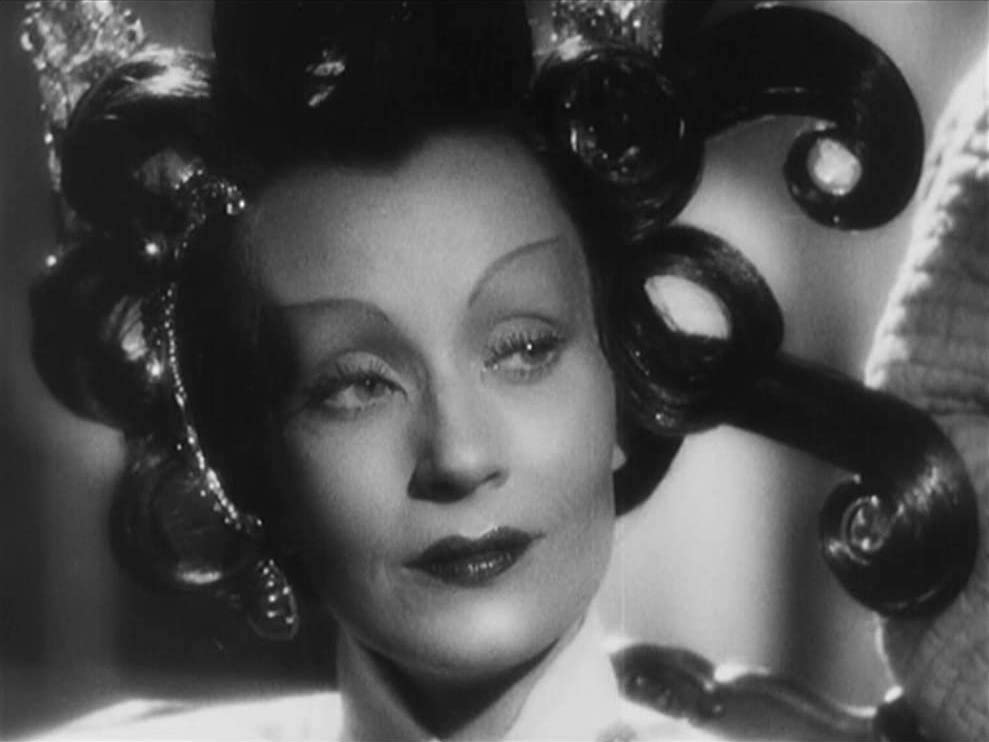
Mother Gin Sling operates the finest gambling house in Shanghai. Only when the newly arrived landowner Sir Guy Charteris threatens to make her close shop, she decides to return the favor.
Coolie: “You like-ee Chinee New Year?”
“Most of the film [The Shanghai Gesture] – though this does not show – I directed from a cot, while lying on my back. Despite this handicap, it launched Gene Tierney and Victor Mature as stellar attractions. It also contained the superlative talents of Walter Huston, Albert Bassermann, and Ona Munson. (...) The [film was] made while the world was engaged in a danse macabre. (...) There was not a corner where I had strolled peacefully a short while ago that was not now pock-marked with bullets. This was not a time to make films. All over my world fellow humans were being tossed like tumbleweed or exterminated like so many flies. Long before this it had become clear to me that the making of films was only my profession, and not my obsession. By the time the atomic bomb was added to man's genius to destroy others I had been knee-deep in celluloid for more than a quarter of a century, and I wished to look back and to look forward. I left Hollywood, which still was engaged in embalming mummies that had been hauled out of their caskets too often, and I built another ivory tower overlooking the Hudson and Manhattan. [The Shanghai Gesture was the last Hollywood film Sternberg ever completed; Howard Hughes fired him halfway through production of Macao in 1951, as well as from Jet Pilot in 1957.]”
Josef von Sternberg1
“This note is an ironclad contract denoting my love, friendship and complete admiration.”
Ona Munson closing a letter to von Sternberg2
“The Shanghai Gesture had no ostensible subject except the decadence and depravity of a horde of people who seem to have been left behind by history and the Shanghai Express [Josef von Sternberg, 1932]. (...) What is most felicitous in The Shanghai Gesture and least appreciated in Sternberg's films generally is the sheer beauty and meaningful grace of physical gestures and movements – the way his players walk, the way they grasp objects and fondle fabrics, the way they light cigarettes and flare the smoke through their nostrils, and the way they eat and drink. In the realm of physical expressiveness, Sternberg is supreme.”
Andrew Sarris3
“De gevoelens van beklemming, van gevangenschap zelfs, in een wereld overvol van dingen, is een van de meest frappante themata van von Sternberg, uit al zijn beelden zo af te lezen. Zijn visuele overdaad is echter grondig ambivalent: het is een overvolheid die een leegte verraadt, een gevangenschap die eigenlijk toch een, zij het erg ‘onzuivere’, vrijheid suggereert. Want, het kan paradoxaal lijken, maar deze propvolle beelden ademen een bepaalde rust uit. Von Sternbergs stijl is geheel en al het omgekeerde van die van een Orson Welles of een Max Ophüls, met wie men hem om zijn barok-expressionistische wereld op het eerste gezicht zou willen vergelijken. Achter de overdaad wordt een constante ascese zichtbaar. De rococo beelden-composities zijn zo beheerst, dat ze niet kunnen resulteren uit een meesterlijk maar niet altijd in toom gehouden spel met vormen, zoals dat bij Fellini meestal het geval is, maar ze worden opgenomen in een scherpe en doelbewuste, ‘demonische’ bewijsvoering. (...) De wereld van von Sternberg verkeert in een voortdurende staat van ontbinding, is gedeeltelijk reeds gefossiliseerd. (...) In deze para-menselijke wereld, in deze volledig artificieel in de studio gereconstitueerde werkelijkheid, in deze hollywoodse super-kitsch worden de spanningen gereduceerd tot minieme details. Eenmaal de toren van Babel gebouwd, hecht Josef von Sternberg alleen nog belang aan het briesje dat een grassprietje doet bewegen en ergens een teken van onvervalst leven verraadt.”
Eric de Kuyper4
- 1Josef von Sternberg, Fun in a Chinese Laundry (New York: Macmillan, 1966), 278-9.
- 2Josef von Sternberg, Fun in a Chinese Laundry (New York: Macmillan, 1966), 120.
- 3Andrew Sarris, The Films of Josef von Sternberg (New York: MoMA, 1966), 47, 50.
- 4Eric de Kuyper, “Josef von Sternberg,” Streven, 1 (1966), 265-6. Together with Harry Kümel, de Kuyper made Josef von Sternberg, een retrospectieve (1969), a feature-length television documentary containing rare interview footage with von Sternberg.

